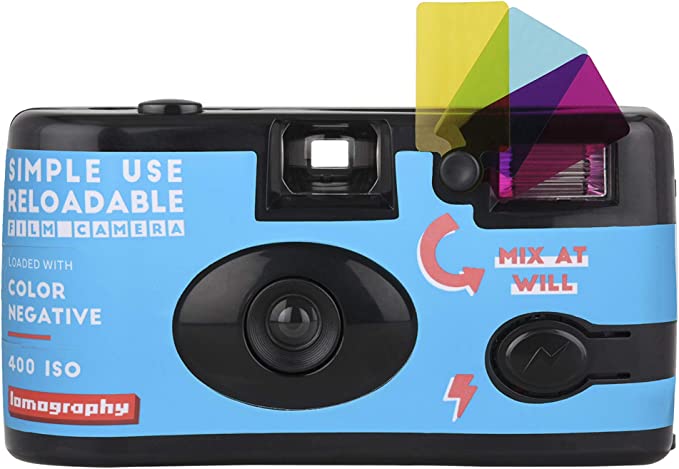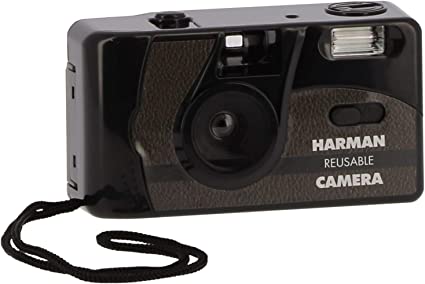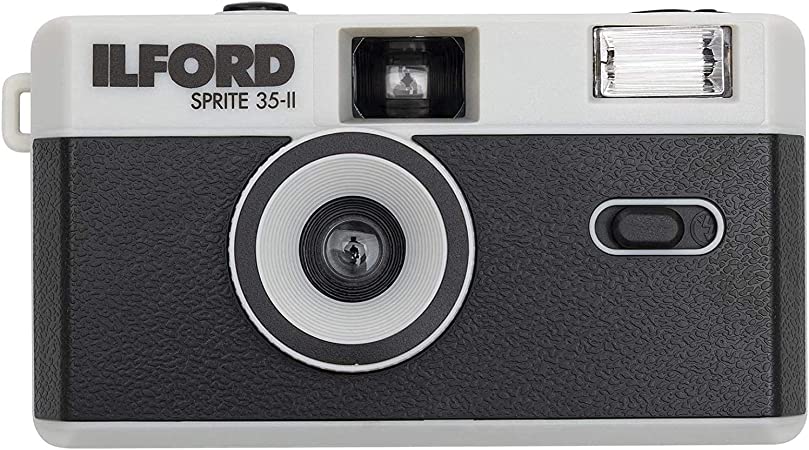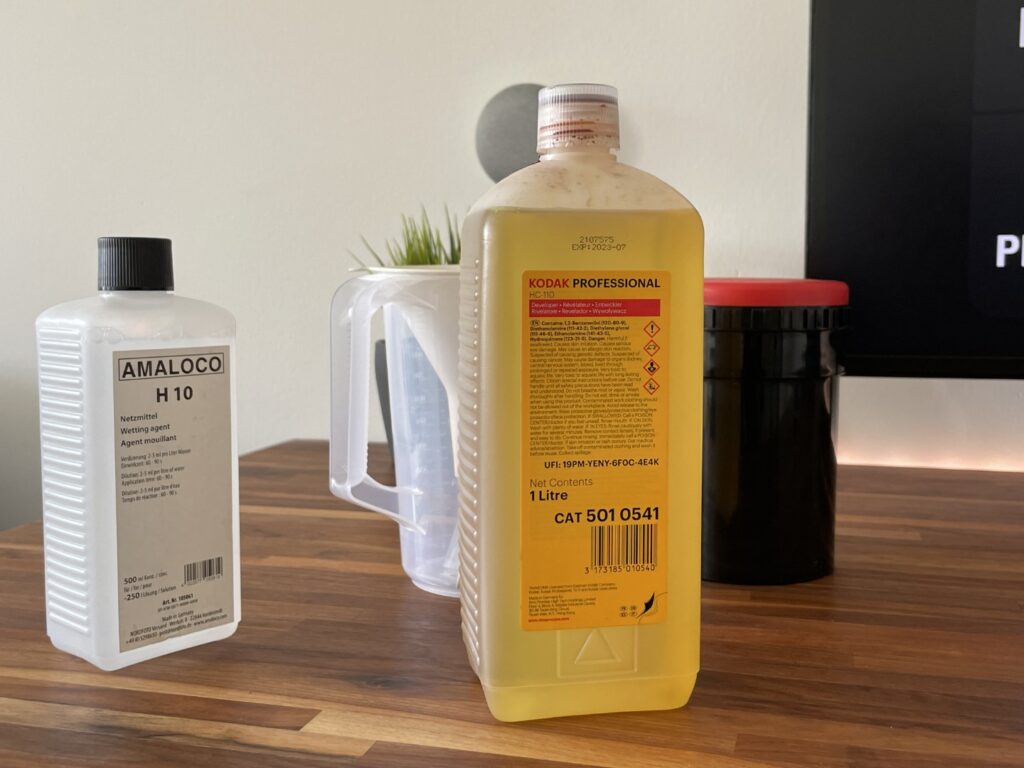Hello, film photography lovers! Let’s jump right into a subject that’s both relevant and vital – the environmental impact of disposable cameras. These handy devices have captured many of our treasured moments, but what happens after their film is spent?
As we explore this important issue, we’ll unpack what these cameras are made of, their life after use, and how we can balance our passion for photography with our commitment to sustainability. So, let’s dive in, and together navigate this intersection of film photography and environmental responsibility.
Are Disposable Cameras recyclable?
Let’s address a key question – are disposable cameras recyclable? The short answer is, yes. However, it’s not quite as straightforward as it might seem.
Recycling disposable cameras involves more than just tossing them into the standard recycling bin. They’re composed of a variety of materials – plastics, metals, and even elements considered as hazardous waste, such as batteries. This means they require special handling.
These mixed materials necessitate that disposable cameras are sent to specialized recycling facilities. These places have the appropriate technology and processes to safely separate and recycle the different components. They can extract valuable elements like silver from the film and metals from the camera’s body. Unfortunately, the plastic components often pose a challenge due to specific recycling restrictions.
What are Disposable Cameras made of?
With recycling under our belt, let’s now peek under the hood – or rather, the plastic casing – of disposable cameras. Just what materials are they made of? When you hold a disposable camera, the first thing you’ll notice is the lightweight plastic exterior. This plastic housing is typically made from a type of plastic called polystyrene. It’s cheap, lightweight, and easy to manufacture, making it a popular choice for many consumer products, not just cameras.
Inside, you’ll find a whole lot more. There’s a preloaded film strip, ready to capture your memories, which is made from a plastic base coated with light-sensitive chemicals. The winding and shutter mechanisms are primarily metal, often a mixture of aluminum and steel. Then, there’s the lens. These are typically made from plastic, as well, keeping the camera light and the production costs down.
To power the camera, especially those with a flash, there’s also a battery. These batteries are typically alkaline or lithium based. While small, they play a critical role in capturing those picture-perfect moments, even in low light.

Are Disposable Cameras Biodegradable?
Now that we’ve explored the innards of a disposable camera, it’s time to address another important question – are these cameras biodegradable? Biodegradable materials are those that can break down naturally over time, returning to the environment without causing any harm. So, do disposable cameras fall into this category?
Unfortunately, the answer is no. The majority of the materials in disposable cameras, such as the plastic casing and lens, as well as the metal mechanisms, are not biodegradable. They won’t decompose and return to nature on their own. Moreover, the battery inside the camera poses another problem. These batteries contain chemicals that, if not disposed of correctly, can leak into the environment, causing contamination. That’s why it’s so crucial to make sure that disposable cameras end up at proper recycling facilities where these materials can be safely dealt with.
The reality that these cameras are not biodegradable strengthens the case for proper disposal and recycling practices. It’s an important step in minimizing the environmental footprint of our photography passions.
What happens to Disposable Cameras after use?

Now that we’ve snapped our last photo and our disposable camera’s film is full, what comes next in its life journey? Let’s explore the post-use trajectory of a disposable camera. Typically, after you’ve used a disposable camera, you’d take it to a photo lab to get the film developed. Here’s where it gets interesting. Some photo labs will remove the film and simply give you your prints, but the rest of the camera? It often just gets tossed in a bin, destined for the landfill.
However, a more responsible photo lab might choose a different path. They might send the used cameras to a specialized recycling facility. As we’ve discussed earlier, these facilities can handle the mix of materials in the camera, separate them, and recycle what can be recycled. The metal parts, for example, are valuable and can be melted down and repurposed. The silver from the film can also be extracted and reused. The plastic casing, though, is a bit trickier due to recycling limitations on certain types of plastics.
The batteries inside the camera are another story. They must be dealt with carefully due to their potentially harmful chemicals. It’s crucial they don’t end up in a landfill where they can leak into the environment.
So, the fate of a disposable camera after use? It depends on where you get your photos developed and whether the facility is committed to responsible recycling practices. The power to influence this lifecycle is in our hands as consumers. We can choose to support those businesses that prioritize sustainability.
How do Disposable Cameras get recycled?
We’ve alluded to the recycling process for disposable cameras a few times now. But what does this process actually involve? Let’s break it down step by step.
Firstly, the disposable cameras are collected from photo labs, camera stores, and sometimes directly from consumers. These collected cameras are then sent to a specialized recycling facility. At these facilities, the cameras are initially sorted and then disassembled. This process involves separating the various components – the plastic casing, the metal parts, the film, and the battery.
Each of these materials then embarks on a different recycling journey:
- Metals: The metal components, such as the winding and shutter mechanisms, are extracted, melted down, and then repurposed for use in new products.
- Film: The used film contains silver halide, which is a valuable resource. This silver can be recovered and reused, often in the production of new film or other industrial applications.
- Plastics: The plastic casing and lens are a bit more challenging. They are typically made of polystyrene, which not all recycling facilities can handle. When possible, this plastic is melted down and reshaped into new plastic products.
- Batteries: Finally, the batteries are handled with care due to the potentially harmful chemicals they contain. These are often sent to a specific battery recycling facility where the harmful chemicals can be safely disposed of, and the reusable materials can be extracted and recycled.
Does a Disposable Camera have a battery?
The answer to that is yes. Each disposable camera houses a small battery, typically alkaline or lithium-based. Its role? To power the flash for those low-light shots. However, batteries, while necessary for functionality, bring an additional environmental concern. They contain chemicals that can potentially harm the environment, making proper disposal crucial.
Why are Disposable Cameras not very Sustainable?
Let’s tackle a critical issue – why are disposable cameras often seen as not very sustainable?
- Single-use nature: Disposable cameras are designed for one-time use. After you’ve taken all the photos, the camera is typically discarded, contributing to the growing waste problem.
- Non-biodegradable materials: As we’ve discussed, disposable cameras are predominantly made of materials that don’t biodegrade, like plastics and metals. They won’t naturally decompose, which means they can persist in the environment for a very long time if not properly recycled.
- Battery pollution: The batteries in disposable cameras can leak harmful chemicals into the environment if they end up in landfills. Proper recycling is crucial, but not always guaranteed.
- Limited recycling options: While some parts of the camera can be recycled, not all materials get a second life. Plastics, especially, pose a challenge due to recycling limitations.
Can I reuse my Disposable Camera?
The term “disposable” might suggest a one-time-use item, but can we challenge that idea? Can a disposable camera be reused? It turns out, yes, they can, with a little know-how and care.
Many film enthusiasts have discovered ways to reload disposable cameras with new film. Here’s a simplified breakdown of the process:
- Carefully open the camera: This is typically done using a small screwdriver to pry open the camera casing. You have to be cautious, as applying too much force can damage the camera.
- Remove the used film: Once the camera is open, you can take out the used film canister.
- Load new film: Next, you insert a new roll of film. This needs to be done in a completely dark room to avoid exposing the film.
- Close the camera: Once the new film is in place, you can close up the camera. It’s now ready to be used again.
However, it’s worth noting that not all disposable cameras are easily reusable. Some models are built in a way that makes them difficult to open without damaging the camera. Plus, reloading film can be a tricky process if you’re not familiar with it.
While reusing disposable cameras can reduce waste, there’s also a risk of damaging the camera or the film if not done correctly. That said, if you’re a photography enthusiast willing to take on the challenge, it can be a rewarding way to keep your disposable camera out of the waste stream.
How do you Dispose of Disposable Cameras properly?
So, you’ve snapped all your shots and the film’s developed. What’s the proper way to bid adieu to your disposable camera? Here’s a guide to ensure it ends up in the right place:
- Don’t throw it in the trash: With the combination of plastics, metals, and a battery, disposable cameras should never just be tossed in your regular garbage bin. They are not destined for a landfill!
- Find a photo lab that recycles: Many photo labs and camera stores offer take-back programs where they’ll ensure the camera is sent to a specialized recycling facility. When you go to get your film developed, ask about their recycling practices to be on the safe side.
- Locate a recycling facility: If your photo lab doesn’t recycle, look for a local electronics recycling facility. They often accept disposable cameras and have the means to recycle them properly.
- Mail it back: Some camera manufacturers, like Kodak, offer a mail-back program. You can send your used camera directly back to them, and they’ll take care of the recycling.
Remember, the goal is to ensure the components of the camera are responsibly handled and recycled as much as possible. Proper disposal is a crucial step in reducing the environmental impact of our photography hobbies. In the next section, we’ll share some tips to get the most out of your disposable camera before it reaches the end of its journey.
How to get the Most out of your Disposable Camera
Before we discuss the end of your disposable camera’s life, let’s explore how to squeeze the most out of it while it’s still in your hands. Here are some tips to make every shot count:
- Lighting is crucial: Disposable cameras generally perform best in well-lit conditions, particularly outdoors. For indoors, make use of the flash, but remember, its range is limited.
- Get close (but not too close): Disposable cameras don’t usually come with a focus feature. Aim for a distance of at least 1.2 meters from your subject for a clear shot.
- Use every frame: A disposable camera comes with a fixed number of exposures, usually 24 or 27. Make each one count. Plan your shots, capture unique moments, and don’t rush to finish the roll.
- Experiment: Disposable cameras are a great tool for experimenting with analog photography. Try different angles, compositions, or even play with light leaks for a vintage effect.
- Reuse if possible: As we mentioned earlier, some disposable cameras can be refilled with film and used again. This isn’t an option for all models, but it’s worth checking.
- Develop promptly: Once you’ve taken all your shots, don’t let the camera sit around. Get the film developed to avoid any potential damage to your precious memories.
By maximizing the use of your disposable camera, you’re not just creating amazing photographs, but also making an environmentally conscious effort by reducing waste
More Sustainable Alternatives to Disposable Cameras
We’ve talked a lot about the challenges disposable cameras pose to the environment. But fear not, photography enthusiasts! There are plenty of more sustainable alternatives to capture those magic moments. Let’s explore a few:
- Reusable cameras: Reusable film cameras, often referred to as “reloadable disposables,” are a great alternative. You can replace the film roll and battery once used, keeping the camera body for repeated use, but they still have the same look and feel like a disposable. Scroll down to find some recommended models in the next section.
- Refurbished vintage cameras: There’s something undeniably cool about shooting on a vintage camera. Not only do they offer a unique aesthetic, but buying used reduces demand for new products and keeps old cameras out of the landfill. Checkout some very budget friendly options here. Once you’ve used these cameras a few times, you’ll have recouped the cost and gained the added benefit of owning a stylish vintage camera that is more environmentally friendly.
- Digital cameras: While they also come with their own environmental footprint, digital cameras can be used indefinitely without the need for film replacement. Plus, you can select the best shots and only print what you need, reducing waste.
- Smartphone cameras: Chances are, you already have a high-quality camera in your pocket. Smartphone cameras have come a long way, and with the right editing apps, you can achieve fantastic results.
While none of these options can entirely erase the environmental impact of photography, they offer a path towards a more sustainable approach to capturing life’s moments
4 great reloadable Alternatives to the classic Disposable cameras
Lomography Simple Use Reloadable

The Lomography Simple Use Reloadable Camera brings a touch of fun and creativity to your film photography adventures. Designed with simplicity in mind, it’s perfect for beginners but also offers enough flexibility for seasoned photographers to experiment. Its reloadable feature stands out, allowing you to insert new film rolls after you’ve used up the initial one. This model also offers quirky color gel filters for the flash, opening up a world of creative possibilities.
Ilford Harman Camera

The Ilford Harman Camera is a modern take on the classic reusable point-and-shoot. Equipped with a fixed-focus lens, it’s user-friendly and perfect for capturing everyday moments. As a standout feature, the Harman comes pre-loaded with two rolls of Ilford’s renowned black and white film, known for its rich contrast and wide tonal range. It’s a lovely choice for anyone looking to explore the world of monochrome photography.
Kodak M35 Reusable

The Kodak M35 Reusable Camera merges the convenience of disposable cameras with the sustainability of a reusable one. With its retro design and variety of color options, it’s as stylish as it is functional. Unlike the previously mentioned models, the M35 features a manual film winding mechanism, giving you that classic film camera feel. Its reusability and Kodak’s commitment to their recycling program make it a more eco-friendly alternative in the disposable camera market.
Ilford Sprite 35-II

The Ilford Sprite 35-II is a nod to the original 1960s Sprite 35 model, but with a modern twist. It’s lightweight, compact, and comes with a built-in flash, making it versatile for various lighting conditions. Compared to the Harman, the Sprite 35-II shoots in both black and white and color, giving photographers more flexibility. This model retains the simplicity of a disposable camera while offering the sustainability of a reusable one.
Kodaks Recycling System for Disposable Cameras
In light of the environmental concerns associated with disposable cameras, it’s worth highlighting efforts by manufacturers to make a difference. Kodak, a prominent name in film photography, has a recycling system in place for their disposable cameras.
Kodak has made strides to implement a recycling program for their disposable cameras. Their process includes:
- Take-back program: Once you’ve used your Kodak disposable camera, you can send it back to the company. They’ve established a system to collect used cameras directly from consumers and retailers.
- Recycling process: Once received, the cameras are sorted, disassembled, and recycled. This includes separating out the film, batteries, and plastic casing. Each component is then sent to the appropriate facility for further recycling or disposal.
- Materials recovery: Kodak makes an effort to recover as much material as possible from each camera. This includes reusing plastic parts and safely disposing of the batteries.
While this system isn’t perfect, it’s a positive step towards greater sustainability in the world of disposable cameras. Kodak’s efforts highlight the potential for manufacturers to take more responsibility for the lifecycle of their products and the importance of proper disposal on the part of consumers. Other camera giants, like Fuji, have also adopted similar green initiatives. If you’re curious about how their process looked in the early days, we’ve dug up an intriguing video from 1998. It offers a fascinating peek into Fuji’s recycling operations at the time.
Conclusion
In wrapping up, it’s clear that disposable cameras, while convenient and nostalgic, come with their fair share of environmental challenges. Yet, there are ways to lessen our impact, be it through proper disposal, recycling, reusing, or opting for more sustainable alternatives.
Remember, as consumers, our choices matter. By opting for more eco-friendly ways to capture our life’s moments, we’re not just preserving memories; we’re also playing a part in preserving our planet. So next time you’re about to click that shutter, give a thought to the camera in your hands. Happy, and responsible, shooting!


